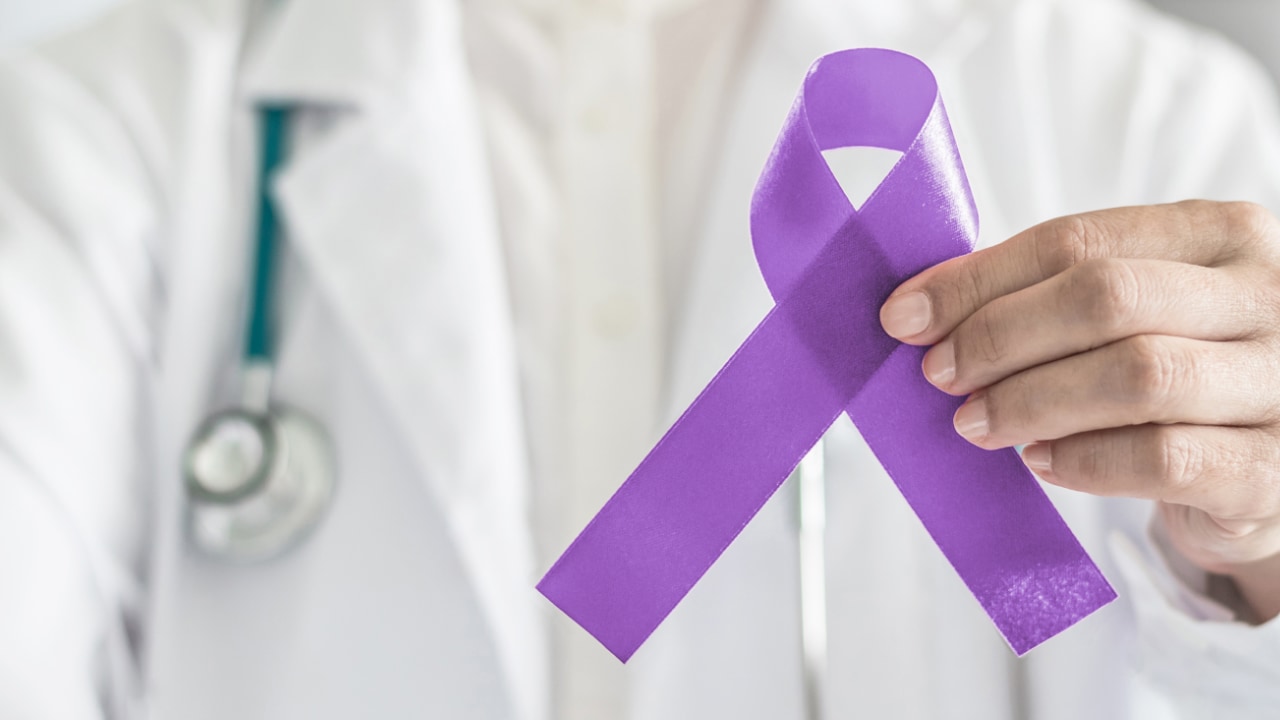Kitao S, Shimamoto A, Goto M, et al. Mutations in RECQL4 cause a subset of cases of Rothmund-Thomson syndrome. Nat Genet. 1999 May. 22(1):82-4. [QxMD MEDLINE Link].
Kitao S, Lindor NM, Shiratori M, Furuichi Y, Shimamoto A. Rothmund-thomson syndrome responsible gene, RECQL4: genomic structure and products. Genomics. 1999 Nov 1. 61(3):268-76. [QxMD MEDLINE Link].
Larizza L, Magnani I, Roversi G. Rothmund-Thomson syndrome and RECQL4 defect: splitting and lumping. Cancer Lett. 2006 Jan 28. 232(1):107-20. [QxMD MEDLINE Link].
Leonard A, Craft AW, Moss C, Malcolm AJ. Osteogenic sarcoma in the Rothmund-Thomson syndrome. Med Pediatr Oncol. 1996 Apr. 26(4):249-53. [QxMD MEDLINE Link].
Wang LL, Gannavarapu A, Kozinetz CA, et al. Association between osteosarcoma and deleterious mutations in the RECQL4 gene in Rothmund-Thomson syndrome. J Natl Cancer Inst. 2003 May 7. 95(9):669-74. [QxMD MEDLINE Link].
Macris MA, Krejci L, Bussen W, Shimamoto A, Sung P. Biochemical characterization of the RECQ4 protein, mutated in Rothmund-Thomson syndrome. DNA Repair (Amst). 2006 Feb 3. 5(2):172-80. [QxMD MEDLINE Link].
Suter AA, Itin P, Heinimann K, Ahmed M, Ashraf T, Fryssira H, et al. Rothmund-Thomson Syndrome: novel pathogenic mutations and frequencies of variants in the RECQL4 and USB1 (C16orf57) gene. Mol Genet Genomic Med. 2016 May. 4 (3):359-66. [QxMD MEDLINE Link].
Werner SR, Prahalad AK, Yang J, Hock JM. RECQL4-deficient cells are hypersensitive to oxidative stress/damage: Insights for osteosarcoma prevalence and heterogeneity in Rothmund-Thomson syndrome. Biochem Biophys Res Commun. 2006 Jun 23. 345(1):403-9. [QxMD MEDLINE Link].
Woo LL, Futami K, Shimamoto A, Furuichi Y, Frank KM. The Rothmund-Thomson gene product RECQL4 localizes to the nucleolus in response to oxidative stress. Exp Cell Res. 2006 Oct 15. 312(17):3443-57. [QxMD MEDLINE Link].
Dietschy T, Shevelev I, Pena-Diaz J, et al. p300-mediated acetylation of the Rothmund-Thomson-syndrome gene product RECQL4 regulates its subcellular localization. J Cell Sci. 2009 Apr 15. 122:1258-67. [QxMD MEDLINE Link].
Maire G, Yoshimoto M, Chilton-MacNeill S, Thorner PS, Zielenska M, Squire JA. Recurrent RECQL4 imbalance and increased gene expression levels are associated with structural chromosomal instability in sporadic osteosarcoma. Neoplasia. 2009 Mar. 11(3):260-8, 3p following 268. [QxMD MEDLINE Link]. [Full Text].
Wu J, Capp C, Feng L, Hsieh TS. Drosophila homologue of the Rothmund-Thomson syndrome gene: essential function in DNA replication during development. Dev Biol. 2008 Nov 1. 323(1):130-42. [QxMD MEDLINE Link]. [Full Text].
Ferrarelli LK, Popuri V, Ghosh AK, Tadokoro T, Canugovi C, Hsu JK, et al. The RECQL4 protein, deficient in Rothmund-Thomson syndrome is active on telomeric D-loops containing DNA metabolism blocking lesions. DNA Repair (Amst). 2013 Jul. 12(7):518-28. [QxMD MEDLINE Link]. [Full Text].
Gupta S, De S, Srivastava V, Hussain M, Kumari J, Muniyappa K, et al. RECQL4 and p53 potentiate the activity of polymerase ? and maintain the integrity of the human mitochondrial genome. Carcinogenesis. 2014 Jan. 35(1):34-45. [QxMD MEDLINE Link].
Lu L, Jin W, Wang LL. Aging in Rothmund-Thomson syndrome and related RECQL4 genetic disorders. Ageing Res Rev. 2017 Jan. 33:30-35. [QxMD MEDLINE Link].
Mo D, Zhao Y, Balajee AS. Human RecQL4 helicase plays multifaceted roles in the genomic stability of normal and cancer cells. Cancer Lett. 2018 Jan 28. 413:1-10. [QxMD MEDLINE Link].
Popadic S, Nikolic M, Gajic-Veljic M, Bonaci-Nikolic B. Rothmund-Thomson syndrome. The first case with plantar keratoderma and the second with coeliac disease. Acta Dermatovenerol Alp Panonica Adriat. 2006 Jun. 15(2):90-3. [QxMD MEDLINE Link].
Otsu U, Moriwaki S, Iki M, Nozaki K, Horiguchi Y, Kiyokane K. Early blistering, poikiloderma, hypohidrosis, alopecia and exocrine pancreatic hypofunction: a peculiar variant of Rothmund-Thomson syndrome?. Eur J Dermatol. 2008 Nov-Dec. 18(6):632-4. [QxMD MEDLINE Link].
Zils K, Klingebiel T, Behnisch W, Mueller HL, Schlegel PG, Fruehwald M, et al. Osteosarcoma in patients with Rothmund-Thomson syndrome. Pediatr Hematol Oncol. 2015 Feb. 32 (1):32-40. [QxMD MEDLINE Link].
Piquero-Casals J, Okubo AY, Nico MM. Rothmund-thomson syndrome in three siblings and development of cutaneous squamous cell carcinoma. Pediatr Dermatol. 2002 Jul-Aug. 19(4):312-6. [QxMD MEDLINE Link].
Howell SM, Bray DW. Amelanotic melanoma in a patient with Rothmund-Thomson syndrome. Arch Dermatol. 2008 Mar. 144(3):416-7. [QxMD MEDLINE Link].
Prendiville JS, Fine JD, Esterly NB. Kindler syndrome and epidermolysis bullosa simplex. J Am Acad Dermatol. 1990 Aug. 23(2 Pt 1):327-8. [QxMD MEDLINE Link].
Wang LL, Plon SE. Rothmund-Thomson Syndrome. Adam MP, Ardinger HH, Pagon RA, Wallace SE, Bean LJH, Stephens K, Amemiya A. GeneReviews. August 11, 2016. University of Washington, Seattle: 1993. [Full Text].
Larizza L, Roversi G, Verloes A. Clinical utility gene card for: Rothmund-Thomson syndrome. Eur J Hum Genet. 2012 Nov 28. [QxMD MEDLINE Link].
Mehollin-Ray AR, Kozinetz CA, Schlesinger AE, Guillerman RP, Wang LL. Radiographic abnormalities in Rothmund-Thomson syndrome and genotype-phenotype correlation with RECQL4 mutation status. AJR Am J Roentgenol. 2008 Aug. 191(2):W62-6. [QxMD MEDLINE Link].
Geronemus RG. Treatment of the cutaneous vascular component of the Rothmund-Thomson syndrome. Pediatr Dermatol. 1996 Mar-Apr. 13(2):175. [QxMD MEDLINE Link].










